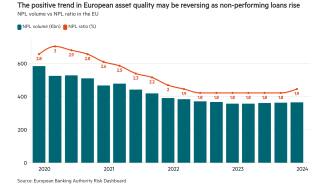Since the financial crisis, the UK has acquired a taste for being the world’s regulatory trailblazer, introducing the terms living wills and ring-fencing to the financial lexicon. The Bank of England’s newest bright idea is a time-varying leverage ratio. The leverage capital ratio would be increased during a boom to force banks to store up capital and ease off lending, and decreased during a downturn to minimise the impact of deleveraging.
The countercyclical capital buffer has been discussed ever since 2008, but the Bank of England is the first regulator to take the plunge and propose a method for its implementation. Until a countercyclical buffer has been deployed through an entire cycle, the reality is that we have no idea how effective it will be. One former senior executive from the UK prudential regulator believes a variable leverage ratio may constrain the size of a financial bubble on the upside, but do little to cushion the economy on the downside. The tendency for a flight to quality in wholesale markets during a downturn would discourage banks from running down their leverage ratio, even if regulators permitted it.











